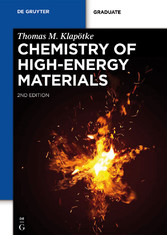Suchen und Finden
1 Introduction
13
1.1 Historical Overview
13
1.2 New Developments
19
1.2.1 Polymer-Bonded Explosives
19
1.2.2 New High (Secondary) Explosives
21
1.2.3 New Primary Explosives
30
1.2.4 New Oxidizers for Solid Rocket Motors
33
1.3 Definitions
36
1.4 Combustion, Deflagration, Detonation – A Short Introduction
40
1.4.1 Fire and Combustion
40
1.4.2 Deflagration and Detonation
43
2 Classification of Energetic Materials
45
2.1 Primary Explosives
45
2.2 High (Secondary) Explosives
47
2.3 Propellant Charges
54
2.4 Rocket Propellants
56
2.4.1 Chemical Thermal Propulsion (CTP)
67
2.5 Pyrotechnics
68
2.5.1 Detonators, Initiators, Delay Compositions and Heat-Generating Pyrotechnics
68
2.5.2 Light-Generating Pyrotechnics
71
2.5.3 Decoy Flares
77
2.5.4 Smoke Munitions
83
2.5.5 Near-Infrared (NIR) Compositions
89
3 Detonation, Detonation Velocity and Detonation Pressure
91
4 Thermodynamics
95
4.1 Theoretical Basis
95
4.2 Computational Methods
101
4.2.1 Thermodynamics
101
4.2.2 Detonation Parameters
104
4.2.3 Combustion Parameters
108
4.2.4 Example: Theoretical Evaluation of New Solid Rocket Propellants
113
4.2.5 Example: EXPLO5 Calculation of the Gun Propellant Properties of Single, Double and Triple Base Propellants
120
5 Initiation
123
6 Experimental Characterization of Explosives
127
6.1 Sensitivities
127
6.2 Long-Term Stabilities
132
6.3 Insensitive Munitions
134
6.4 Gap Test
136
6.5 Classification
137
7 Special Aspects of Explosives
141
7.1 Shaped Charges
141
7.2 Detonation Velocities
147
7.3 Gurney Model
152
7.3.1 Example: Calculation of the Gurney Velocity for a General Purpose Bomb
157
8 Correlation between the Electrostatic Potential and the Impact Sensitivity
159
8.1 Electrostatic Potentials
159
8.2 Volume-Based Sensitivities
162
9 Design of Novel Energetic Materials
165
9.1 Classification
165
9.2 Polynitrogen Compounds
167
9.3 High-Nitrogen Compounds
172
9.3.1 Tetrazole and Dinitramide Chemistry
173
9.3.2 Tetrazole, Tetrazine and Trinitroethyl Chemistry
180
9.3.3 Ionic Liquids
185
9.4 Dinitroguanidine Derivatives
189
9.5 Co-Crystallization
191
9.6 Future Energetics
192
10 Synthesis of Energetic Materials
197
10.1 Molecular Building Blocks
197
10.2 Nitration Reactions
198
10.3 Processing
203
11 Safe Handling of Energetic Materials in the Laboratory
205
11.1 General
205
11.2 Protective Equipment
206
11.3 Laboratory Equipment
208
12 Energetic Materials of the Future
211
13 Related Topics
217
13.1 Thermobaric Weapons
217
13.2 Agent Defeat Weapons
219
13.3 Nanothermites
221
13.3.1 Example: Iron Oxide/Aluminum Thermite
227
13.3.2 Example: Copper Oxide/Aluminum Thermite
228
13.3.3 Example: Molybdenum Trioxide/Aluminum Thermite
229
13.4 Homemade Explosives
230
14 Study Questions
231
15 Literature
235
16 Appendix
245
Index
259
Alle Preise verstehen sich inklusive der gesetzlichen MwSt.








